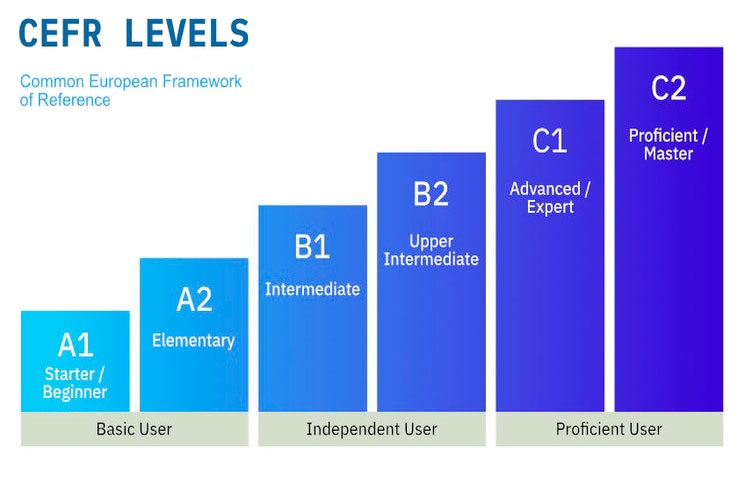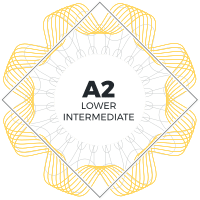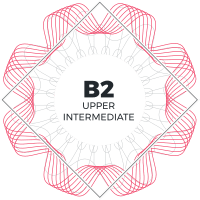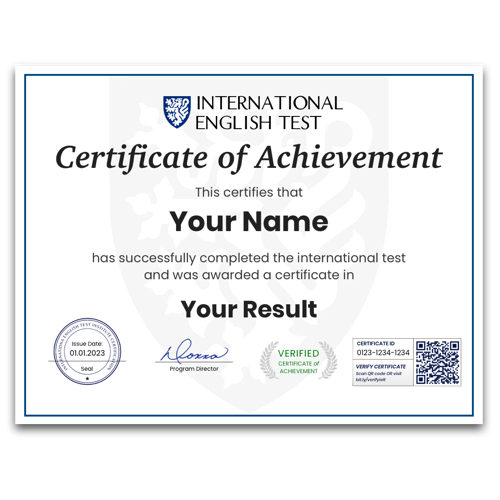English Levels
English level refers to a person’s proficiency or skill level in the English language. English proficiency levels are categorized by CEFR. The CEFR divides English proficiency into six main levels:
- A1 – Beginner
- A2 – Elementary
- B1 – Intermediate
- B2 – Upper-Indermediate
- C1 – Advanced
- C2 – Proficient

CEFR Levels

A1 English Level
English level A1 is the first level of English in the Common European Framework of Reference (CEFR), a definition of different language levels written by the Council of Europe.
In everyday speech, this level would be called “beginner”, and indeed, that is the official level descriptor in the CEFR. In practice it is possible to be at a pre-A1 level of English. A student who is just beginning to learn English, or who has no prior knowledge of English, is at a pre-A1 level.

A2 English Level
English level A2 is the second level of English in the Common European Framework of Reference (CEFR), a definition of different language levels written by the Council of Europe.
In everyday speech, this level might be described as “basic” as in “I speak basic English”. The official level descriptor in the CEFR is “elementary”, which means the same thing: it is the foundation. At this level, students have mastered the basics of English and can communicate simple, basic needs.

B1 English Level
English level B1 is the third level of English in the Common European Framework of Reference (CEFR), a definition of different language levels written by the Council of Europe.
In everyday speech, this level would be called “intermediate”, and indeed, that is the official level descriptor in the CEFR. At this level, students are beyond the basics but they are still not able to work or study exclusively in English.

B2 English Level
English level B2 is the fourth level of English in the Common European Framework of Reference (CEFR), a definition of different language levels written by the Council of Europe.
In everyday speech, this level might be called “confident”, as in “I am a confident English speaker”. The official level descriptor is “upper intermediate”. At this level, students can function independently in a variety of academic and professional environments in English, although with a limited range of nuance and precision.

C1 English Level
English level C1 is the fifth level of English in the Common European Framework of Reference (CEFR), a definition of different language levels written by the Council of Europe.
In everyday speech, this level might be called “advanced”, and that is the official level descriptor for this level. At this level, students can function independently and with a great deal of precision on a wide variety of subjects and in almost any setting without any prior preparation.

C2 English Level
English level C2 is the sixth and final level of English in the Common European Framework of Reference (CEFR), a definition of different language levels written by the Council of Europe. In everyday speech, this level might be called “bilingual”, as in “I am bilingual in English and French.” A well-educated native English speaker is technically at a C2 level. Relatively few English learners reach this level because their professional or academic goals do not require it.

Language proficiency levels
The Common European Framework of Reference for Languages (CEFR) is one of the most widely used frameworks for language proficiency levels, and it includes six main levels:
- A1 (Beginner): Basic language skills, able to understand and use simple expressions related to everyday life.
- A2 (Elementary): Can handle straightforward communication in familiar situations and express simple ideas.
- B1 (Intermediate): Competent in everyday interactions and can deal with most situations likely to arise while traveling or living in a foreign country.
- B2 (Upper Intermediate): Can communicate with a degree of fluency and spontaneity, and understand more complex texts on familiar topics.
- C1 (Advanced): Proficient in a wide range of demanding tasks, understand complex texts, and express ideas with clarity and precision.
- C2 (Proficient): Near-native or native-level fluency, able to understand and produce almost any type of language, including idiomatic expressions and colloquialisms.

Get your English level certificate
✓ Get a personalized English level certificate
✓ Add your CEFR levels to your resume.
✓ Download your certificate as PDF
✓ Easily add your certificate to LinkedIn Profile
FAQ: English Levels
What is English level?
The term “English level” typically refers to a person’s proficiency or skill level in the English language. English proficiency levels are commonly categorized using frameworks like the Common European Framework of Reference for Languages (CEFR) or other language proficiency scales.
The CEFR divides English proficiency into six main levels: Beginner (A1, A2), Intermediate (B1 B2), ADvanced (C1 C2).
What is A1 A2 B1 B2 C1 C2?
- A1 – Beginner
- A2 – Elementary
- B1 – Intermediate
- B2 – Upper-Indermediate
- C1 – Advanced
- C2 – Proficient
